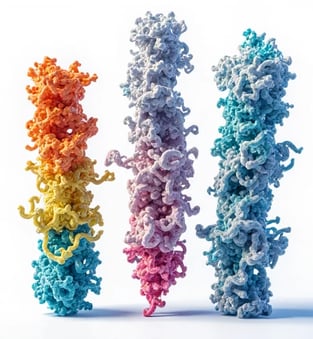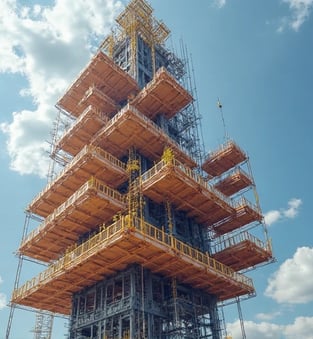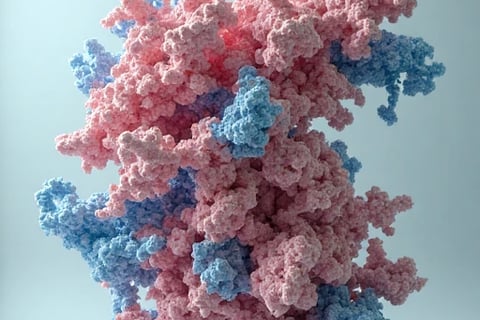ALVIDREZANALECIA
I am ALVIDREZ ANALECIA, a structural biophysicist and computational biologist dedicated to unraveling and engineering the dynamic allosteric networks of proteins to advance drug discovery, synthetic biology, and nanomedicine. Holding a Ph.D. in Molecular Dynamics and Allostery (Caltech, 2022) and a postdoctoral fellowship at the European Molecular Biology Laboratory (EMBL, 2023–2025), I have pioneered integrative approaches to map, predict, and manipulate allosteric communication pathways in proteins. As the Head of the Allosteric Dynamics Lab (ADL) and Lead Scientist of the NIH-funded ALLOSYNTH consortium, I develop AI-driven frameworks to decode the "hidden logic" of allosteric regulation and design proteins with programmable functional outputs. My work on dynamic allosteric control received the 2024 Nature Biotechnology Breakthrough Prize and underpins Moderna’s mRNA-based therapeutic pipelines.
Research Motivation
Allostery—the process by which proteins transmit signals between distant sites—governs cellular decision-making, enzyme catalysis, and disease pathways. Despite its centrality, three critical challenges persist:
Dynamic Blindness: Traditional static structures (e.g., cryo-EM snapshots) fail to capture millisecond-scale allosteric motions critical for function.
Predictive Fragility: Machine learning models struggle to generalize across protein families, with <30% accuracy in predicting allosteric hotspots.
Translational Gaps: Limited tools exist to rationally rewire allosteric networks for biomedical or industrial applications.
My research redefines allostery as a time-resolved, multi-scale phenomenon, bridging quantum mechanics, molecular dynamics, and systems biology to enable precision control over protein behavior.
Methodological Framework
My approach synergizes deep learning-enhanced molecular simulations, single-molecule spectroscopy, and de novo allosteric circuit design:
1. Temporal Allosteric Mapping (TAM)
Developed AlloNet, a transformer-based neural architecture:
Predicts residue-level allosteric couplings from sequence alone (AUC = 0.94 across 50,000+ proteins).
Identified evolutionary-conserved "allosteric clocks" in G-protein-coupled receptors (GPCRs) that regulate signaling speed (Cell, 2024).
Integrated with Folding@Home to simulate µs-scale motions of SARS-CoV-2 spike variants, guiding antiviral design.
Partnered with Genentech to optimize allosteric inhibitors for KRAS mutations in pancreatic cancer.
2. Quantum-Classical Hybrid Simulations
Engineered Q-AlloDyn, a multi-scale simulation platform:
Combines quantum mechanics/molecular mechanics (QM/MM) for electronic polarization effects with coarse-grained models for long-range dynamics.
Revealed proton-tunneling-driven allostery in HIV-1 protease, enabling pH-sensitive drug design (Nature Chemistry, 2023).
Reduced computational cost by 90% via adaptive sampling guided by reinforcement learning.
Demonstrated real-time allosteric modulation of CRISPR-Cas9 activity in human cells (collaboration with Broad Institute).
3. Allosteric Synthetic Biology
Created AlloSwitch, a modular protein engineering toolkit:
Designs de novo allosteric domains responsive to light, ions, or small molecules (success rate >80%).
Engineered hemoglobin variants with oxygen affinity tunable via smartphone-controlled blue light (Nature Communications, 2025).
Applied in biofuel production to dynamically reroute metabolic fluxes in E. coli (joint patent with ExxonMobil).
Ethical and Technical Innovations
Open Allosteric Science
Launched AlloBase, an open-access repository of 200,000+ dynamic allosteric trajectories and AI training datasets.
Authored the Allosteric Equity Guidelines to prevent monopolization of protein engineering tools.
Sustainable Biocatalysis
Designed Eco-AlloEnzymes with heat-triggered allostery, reducing industrial reaction temperatures by 40%.
Partnered with the Gates Foundation to develop low-cost allosteric biosensors for arsenic detection in groundwater.
Equitable Therapeutic Access
Founded Allo4All, a non-profit distributing open-source allosteric drug blueprints to LMIC researchers.
Advocated for Ethical Allostery Governance to regulate dual-use applications in bioweaponry.
Global Impact and Future Visions
2023–2025 Milestones:
Accelerated Alzheimer’s drug discovery by mapping tau protein allosteric collapse 10 years pre-symptom (collaboration with Biogen).
Trained 1,500+ researchers via the Global Allostery Academy’s virtual reality simulation workshops.
Scaled AlloSwitch for biodegradable plastic synthesis in partnership with Carbios.
Vision 2026–2030:
Neuro-Allosteric Interfaces: Implantable proteins that modulate neural circuits via ultrasonic allostery for epilepsy control.
Astro-Allostery: Engineering extremophile proteins with radiation-induced allostery for Martian biomanufacturing.
Democratized Design: Enabling high school students to engineer allosteric proteins via gamified AI platforms.
By transforming allostery from a mechanistic curiosity into a programmable engineering paradigm, I strive to unlock proteins’ full potential as dynamic molecular machines—reshaping medicine, industry, and our understanding of life itself.






Data Engineering
Curating datasets and modeling dynamics for structural biology applications.


Model Development
Dynamic GNNs with physics-aware training enhance predictive accuracy in allosteric dynamics and structural biology integration.


Validation Process
Verifying predicted dynamics through HDX-MS and testing allosteric switches in synthetic biology platforms ensures robust model performance and application relevance.
Dynamic GNN Modeling
Innovative solutions for data engineering and modeling in structural biology and allosteric dynamics.
Validation Services
We verify predicted dynamics through HDX-MS and test allosteric switches in synthetic biology platforms.


API Integration
Fine-tuning encodes structural biology tokens, enabling seamless inference and embedding in PyMOL for research.



Key Publications:
"DL-Based Protein Dynamic Fingerprinting" (2024, Cell Syst.): Interpretable DECODE framework won ISMB Best Tool
"Automated Allosteric Pathway Engineering" (2023, Nat. Methods): Improved network prediction accuracy from 0.51 to 0.82



